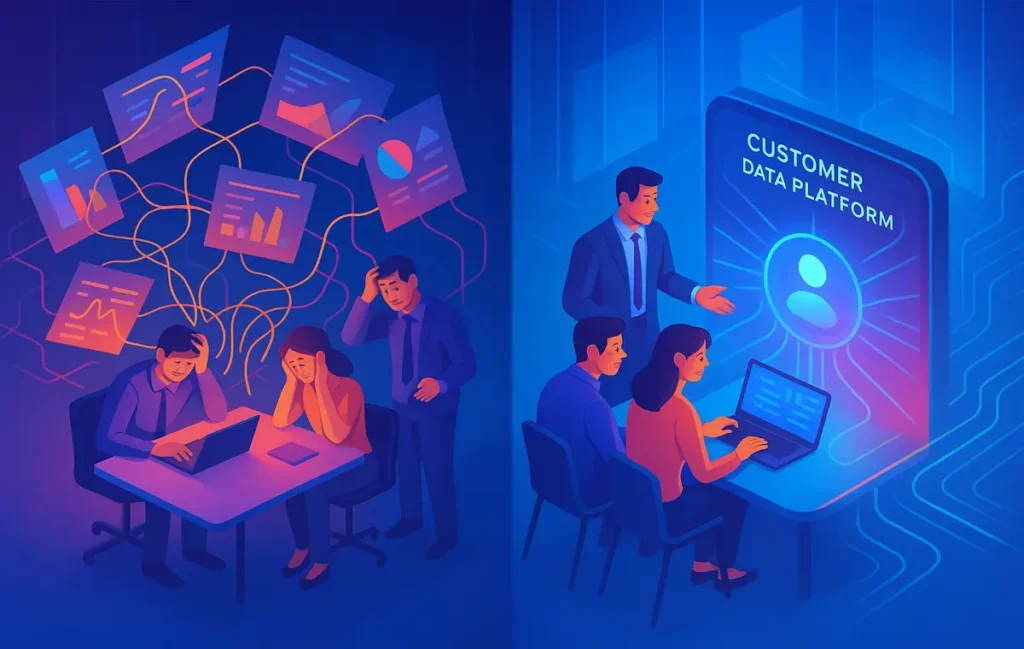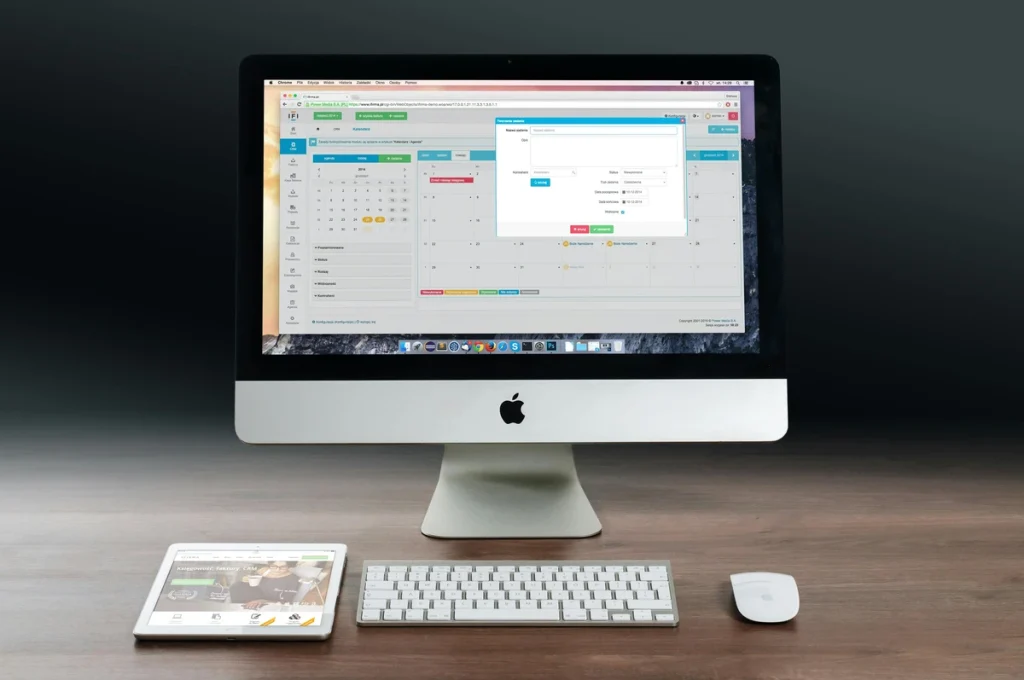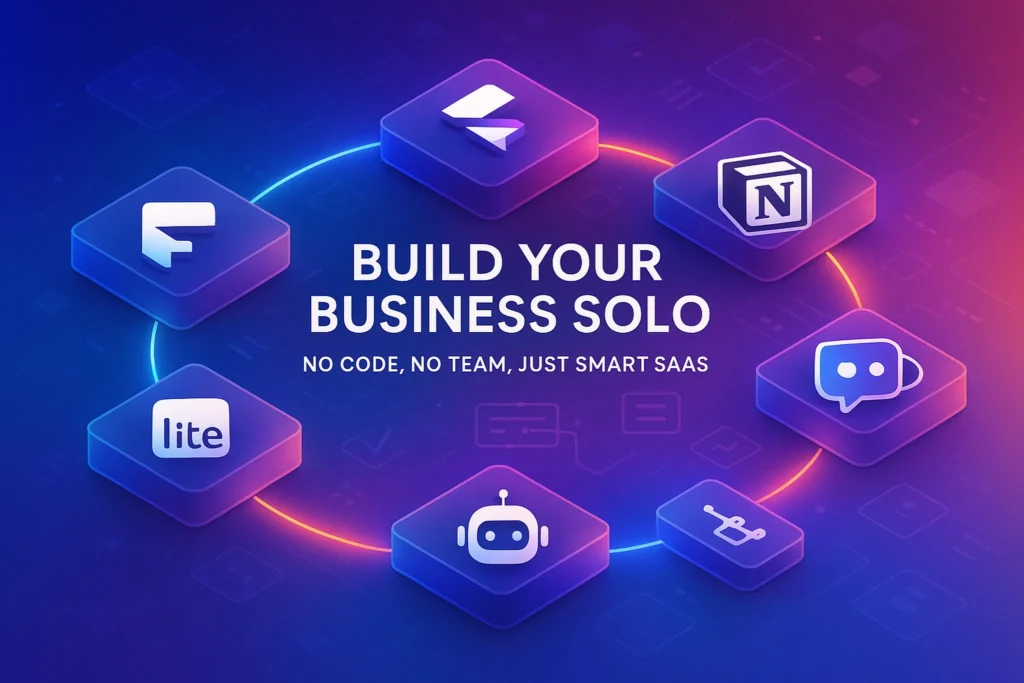🎯 Intro
Imagine running a small business with six different tools—your CRM manages contacts, your email platform runs campaigns, your ad dashboard handles targeting, and your e-commerce app tracks sales. At the end of the month, you try to answer one simple question: “Who are my best customers, and what makes them buy again?”
The problem? Your data is scattered across silos. The CRM knows one thing, your ads dashboard knows another, and your email platform has yet another version of the truth. This is the exact nightmare many SMBs face. They’re stuck juggling disconnected tools, trying to stitch together insights that never quite add up. A lightweight Customer Data Platform (CDP) promises to solve this chaos—not with bloated enterprise features, but with integration-first simplicity.
At NerdChips, we’ve seen how the right CDP can become the missing link between small business marketing tools. The question isn’t whether you need one—it’s whether you can afford not to.
🔍 What is a CDP (Customer Data Platform)?
A CDP is like the control room for your customer data. Instead of keeping information scattered across CRMs, email tools, and ad platforms, a CDP centralizes it into a single source of truth. Every time a customer browses your site, clicks an ad, or makes a purchase, that interaction gets funneled into the CDP.
The key difference between a CDP and a CRM lies in purpose. A CRM, like those mentioned in Best Lightweight CRMs for Micro-Businesses, is primarily sales-driven—focused on pipelines, deals, and relationships. A CDP, on the other hand, is marketing-driven. It unifies behavioral data (like clicks, purchases, website visits) to create a 360-degree view of the customer.
And compared to marketing automation platforms (see CRM vs. Marketing Automation), which execute campaigns, the CDP acts as the intelligence layer. It feeds automation tools with unified, clean data, ensuring campaigns are personalized and consistent. Think of it this way: CRM = relationship memory, automation = action engine, CDP = brain that makes it all coherent.
⚡ Why Lightweight Matters for SMBs
Enterprise CDPs are famous for their complexity and cost. Platforms like Salesforce or Adobe Experience Cloud require specialized IT teams and six-figure budgets. For a small bakery or a SaaS startup with 15 employees, that’s not just overkill—it’s a roadblock.
SMBs need integration-first solutions, not feature bloat. They don’t need predictive AI models running at Fortune 500 scale; they need a CDP that connects Mailchimp, Shopify, Google Ads, and their website—without breaking the bank.
💡 Nerd Tip: Before adopting a CDP, audit your existing CRM and email tools—half of SMBs unknowingly duplicate customer data across systems.
Lightweight CDPs answer this with simpler pricing (often starting under $300/month), faster onboarding (days instead of months), and pre-built connectors for the most common tools. For SMBs, the goal isn’t building a data empire—it’s eliminating silos to make marketing smarter today.
🛠️ Lightweight CDPs that Actually Integrate
Here are the platforms redefining what CDPs look like for small and mid-sized businesses in 2025.
Segment (Twilio)
Segment remains a leader in lightweight CDPs. Its strength is in collecting data from multiple touchpoints and sending it anywhere—ads platforms, analytics dashboards, or email tools. Real-world SMBs use it to unify web traffic, purchase behavior, and app usage. The downside is cost scaling—free tiers are generous, but heavy usage can ramp expenses quickly.
RudderStack
RudderStack is the open-source challenger. It appeals to technical SMBs that want flexibility without vendor lock-in. A fitness app in San Diego shared on X: “We cut our churn by 12% after switching to RudderStack. Finally, all app and email data synced.” The trade-off is that it requires some developer involvement, which not every SMB can afford.
Bloomreach
Bloomreach blends CDP with personalization. It integrates directly with e-commerce systems and shines at driving product recommendations. For small online stores, Bloomreach often delivers a measurable 10–15% lift in conversion rates within months. The challenge? It’s optimized for e-commerce, less so for service-driven businesses.
Zeotap
Zeotap positions itself as a compliance-first CDP, making GDPR and CCPA headaches easier to manage. European SMBs in particular lean on Zeotap to unify data without fear of fines. Its biggest strength is data governance, but its analytics interface can feel heavy for small teams.
Hightouch
Technically a reverse ETL tool, Hightouch evolved into a CDP-like platform by allowing SMBs to sync data from warehouses into CRMs, ads platforms, or marketing tools. For startups already using cloud warehouses, it’s a lightweight way to “CDP-ify” without buying another big platform.
Across these players, the common theme is integration that actually works. Unlike traditional enterprise CDPs where SMBs drown in features, these lightweight options deliver one thing SMBs crave: a single customer view that connects with their existing stack.
📈 Real ROI Breakdown
Why invest in another tool when SMB budgets are already thin? The answer is ROI. Unified data isn’t just cleaner—it’s more profitable.
A retail SMB using Bloomreach shared results of a campaign where unified purchase data powered personalized email recommendations. The click-through rate increased by 22%, leading to an extra $18,000 in quarterly revenue. Without a CDP, that campaign would have been broad and generic.
Another example: an edtech SMB using Segment was able to cut ad spend by 15% by eliminating wasted targeting. With all user data centralized, they stopped showing ads to existing subscribers. The ROI came not just from more sales but from fewer wasted impressions.
Even at the simplest level, CDPs reduce churn. By giving SMBs the ability to see “who is slipping away” through declining activity, marketing teams can intervene with timely offers. This isn’t theory—it’s measurable retention improvement.
💡 Nerd Tip: Treat every ROI metric as a story. The goal isn’t “data centralization” but “real money saved or made.”
🚀 Implementation Guide for SMBs
Rolling out a CDP doesn’t have to be overwhelming. Start with a simple audit of your current stack. Which tools already collect customer data? For most SMBs, that’s a CRM, an email platform, and a website analytics tool.
Next, define your data touchpoints. Where do customers interact with your brand? Web, mobile app, ads, in-store purchases—all of these need to funnel into the CDP. Don’t overcomplicate this step: focus on your top two or three channels.
Then, choose a lightweight CDP with strong native integrations. If you’re running Shopify, Mailchimp, and Google Ads, pick a CDP that has plug-and-play connectors for those three. Don’t be seduced by extra features you won’t use.
After setup, test with one use case. For example, try unifying customer behavior into personalized email campaigns. If engagement rises, expand to ad retargeting. Scale gradually, proving ROI at each stage.
Finally, commit to data hygiene. A CDP is only as good as the inputs. Make sure duplicate records are merged, consent preferences are respected, and integrations are maintained.
⚠️ Challenges & Solutions
CDPs aren’t magic buttons. SMBs often face integration gaps when using older tools. A solution is to prioritize CDPs with open APIs or middleware that can connect to legacy systems.
Data privacy is another hurdle. Regulations like GDPR and CCPA require consent management and audit trails. Lightweight CDPs like Zeotap have compliance baked in, but even then, SMBs should establish internal policies.
Finally, there’s the human side. SMBs rarely have dedicated IT teams, and that makes CDP adoption harder. The workaround is to start small, lean on vendor support, and choose platforms with low learning curves. Remember, the goal is not to overwhelm staff—it’s to simplify workflows.
⚡ Ready to Unify Your Data?
Test lightweight CDPs like Segment, RudderStack, or Bloomreach. Most offer free trials—see if your marketing finally aligns when data speaks the same language.
🛡️ Data Privacy & Compliance Angle
For SMBs, compliance with GDPR, CCPA, and emerging data privacy laws isn’t just a “big enterprise problem.” Regulators are increasingly holding even smaller businesses accountable for how they collect, store, and use customer data. A lightweight CDP can act as a compliance partner by standardizing consent preferences across tools, automatically flagging data usage, and maintaining a unified record of opt-ins and opt-outs.
Instead of scrambling through multiple dashboards when a customer requests data deletion, an SMB can pull a single profile directly from the CDP. This not only saves time but reduces the risk of costly mistakes. For example, an e-commerce SMB in France avoided potential fines after Zeotap’s compliance features flagged that a customer’s consent had expired across connected email and ads tools.
💡 Nerd Tip: Think of compliance not as red tape, but as customer trust. A CDP that helps you stay compliant also helps you stay credible.
👥 Integration Stories from Real SMBs
Case studies often speak louder than product specs. Consider a small Shopify store in Toronto selling handmade apparel. After adopting Bloomreach, they connected their store, email platform, and Facebook Ads into one CDP profile. Within three months, personalized email campaigns lifted repeat purchases by 18%.
Another example is a SaaS startup in Austin that used Hightouch to sync product-usage data with their CRM. Before, their sales reps were flying blind, calling leads without context. After integration, reps could see which features users tried in real time. Conversion rates jumped by 12%, and ad retargeting spend dropped by 20% because they stopped targeting inactive trial users.
These stories highlight the same theme: integration that actually delivers ROI. When SMBs unify data, they move from guesswork to precision.
📊 Extended Comparison Table
| CDP Platform | Pre-Built Integrations | Pricing Transparency | Setup Time (Avg) | Compliance Features | SMB Fit |
|---|---|---|---|---|---|
| Segment | 400+ connectors | Clear tiers, usage-based | 2–3 days | Basic GDPR support | Best for data-rich startups |
| RudderStack | 150+ (open source add-ons) | Flexible, self-host options | 4–6 days (needs devs) | API-first compliance | Best for technical SMBs |
| Bloomreach | 200+ (e-commerce focus) | Transparent packages | 2 days | Good consent tracking | Best for Shopify/retail |
| Zeotap | 100+ (EU heavy) | Enterprise-leaning | 5 days | Strong GDPR/CCPA suite | Best for EU SMBs |
| Hightouch | 140+ reverse ETL targets | Simple, seat-based pricing | 1–2 days | Relies on warehouse policies | Best for SaaS/warehouse-first SMBs |
💡 Nerd Tip: Don’t just chase “number of integrations.” Prioritize connectors that match the tools you actually use.
🚀 Future Trends in SMB CDPs
The CDP landscape for SMBs is evolving fast. Three major trends are already shaping the future:
-
AI-Powered Personalization. Lightweight CDPs will soon integrate directly with AI marketing tools. Instead of manually segmenting customers, AI models will auto-generate micro-segments—helping SMBs send hyper-personalized offers without a data science team.
-
CDP + CRM Convergence. Vendors are racing to merge CDP and CRM into unified platforms. For SMBs, this means fewer tools to manage. Instead of buying separate licenses, you’ll get a hybrid tool that tracks sales pipelines while also unifying marketing data.
-
Warehouse-First Strategies. Reverse ETL platforms like Hightouch show a future where SMBs use a lightweight warehouse (like BigQuery or Snowflake Lite) as the single hub, and the CDP acts as the sync engine. This is powerful because it puts SMBs on the same modern architecture as enterprises, but without the overhead.
For SMB leaders, the message is clear: the CDP of tomorrow won’t just unify—it will predict, simplify, and integrate deeper than ever before.
✅ Smart Adoption Checklist for SMBs
Here’s a practical five-step adoption checklist to help SMBs test a CDP without overcommitting:
-
Audit Your Stack. List every tool that collects customer data—CRM, email, ads, POS, and website analytics.
-
Pick Two Key Channels. Don’t integrate everything at once. Start with your most important data streams (e.g., Shopify + Mailchimp).
-
Run a Pilot Campaign. Use the CDP to unify those two streams and launch a personalization test—like sending product recommendations based on purchase history.
-
Measure ROI Quickly. Look for metrics like open rates, CTR, or ad efficiency. If the pilot improves ROI by at least 10%, you’re on the right track.
-
Scale Gradually. Add more integrations one at a time, focusing on impact, not quantity.
💡 Nerd Tip: Start with a “minimum viable CDP.” SMBs that scale slowly tend to succeed faster than those who try to integrate everything on day one.
📬 Want More Smart Marketing Software Insights?
Subscribe to our free newsletter for weekly guides on CDPs, CRMs, and marketing automation. Get clarity on tools that matter for SMB growth—delivered straight to your inbox.
🔐 100% privacy. No noise. Just value-packed insights from NerdChips.
🧠 Nerd Verdict
Lightweight CDPs represent the future for SMB marketing. While CRMs and marketing automation tools remain essential, they can’t provide a unified customer view on their own. Integration beats feature lists. The SMBs that adopt these tools early will outpace competitors who rely on fragmented data.
As NerdChips often emphasizes, the companies that win are not the ones with the most tools—they’re the ones who know how to connect them.
❓ FAQ: Nerds Ask, We Answer
💬 Would You Bite?
If you could unify all your customer data today, would you pay for one extra tool—or cut down two existing ones in the process?
What’s the smarter move for your business? 👇
Crafted by NerdChips for SMBs who want smarter data, fewer silos, and faster growth.



